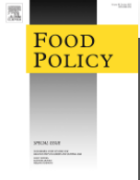Essential, fragile, and invisible community food infrastructure: The role of urban governments in the United States

Published in 2020, Jill Clark, Brian Conley, & Samina Raja’s article Essential, fragile, and invisible community food infrastructure: The role of urban governments in the United States, provides a national overview of how urban local governments engage in food systems policy work across the United States. Drawing on a national survey of urban planners by the Growing Food Connections initiative housed at the UB Food Systems Planning and Healthy Communities Lab, the authors suggest that although local urban governments utilize a range of policy tools they are overregulating and underinvesting in food systems. Food production and retail and service sectors receive more attention, while middle infrastructure – or intermediated markets that connect production with consumption and builds larger markets, thereby diversifying the food system and building resiliency – receive less attention.
Clark, Conley, & Raja’s article was published within a special issue of Food Policy, Urban Food Policies for a Sustainable and Just Future, edited by Dr. Jane Battersby, Senior Researcher for the African Centre for Cities at the University of Cape Town. Dr. Battersby’s research focus is on urban food systems, urban food policies, and food security theory in Northern and Southern research contexts. In 2019, Dr. Battersby delivered UB’s Jammal Lecture, Malls, Markets, and Malnutrition: Food In/Sensitive Planning in African Cities, co-sponsored by the Community for Global Health Equity.
Clark, J. K., Conley, B., & Raja, S. (2020). Essential, fragile, and invisible community food infrastructure: The role of urban governments in the United States. Food Policy, 102014.
Abstract
Community advocates and some scholars have argued that metropolitan food systems are central yet fragile food infrastructure. While recent events have suddenly laid this bare for many, it has been a matter of long-time concern to community advocates and scholars alike. Until recently, much of the food system has remained invisible to subnational policy makers. Within the past decade, an increasing number of urban local governments are heeding persistent calls from advocates and scholars to address the sustainability of metropolitan food systems in the United States. This paper provides a national overview of how urban local governments are engaging in policy for food systems (production, middle infrastructure, and retail and food service) across the United States. Results of a national survey of urban planners suggest that food systems policy is gaining attention, but progress needs to be made. While urban governments are prioritizing retail and food service and food production (both visible on the landscape), less attention is paid to the middle infrastructure that helps build self-reliance and resiliency by connecting production with consumption and building larger markets. Results also suggest that policy tools used by local governments are overregulating and underinvesting in food systems. Finally, the role of local governments supporting essential food system workers through planning and policy is raised.
